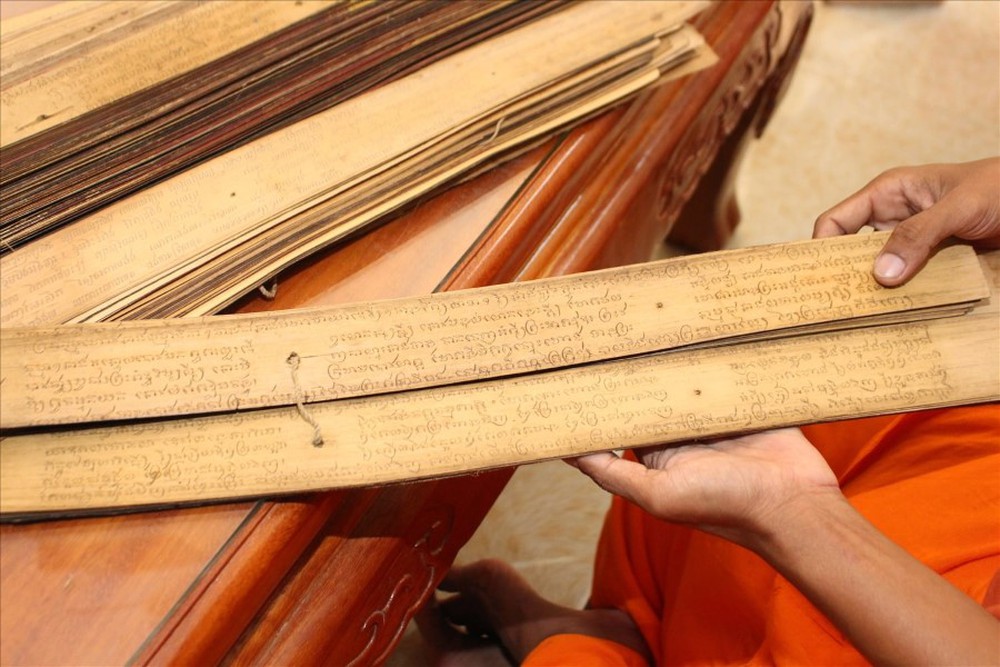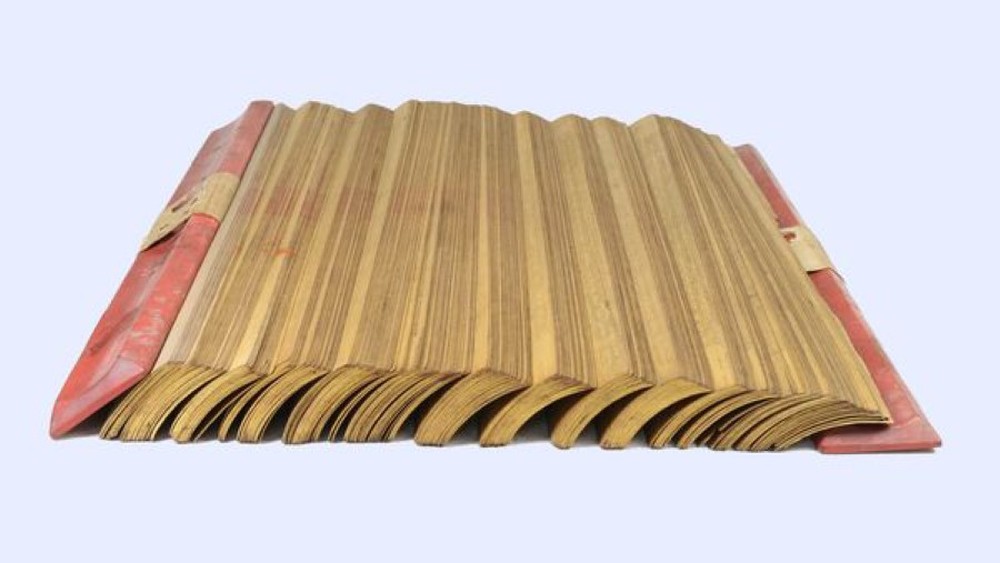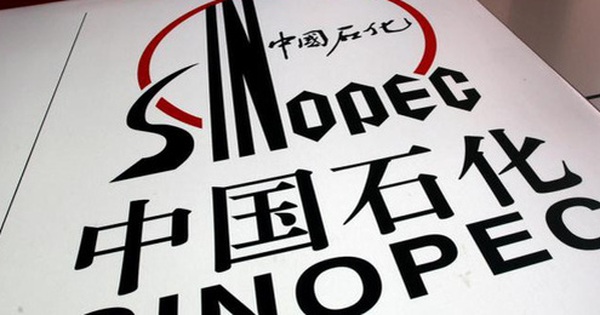
More than 1,000 years ago, the leaves of the sutras – the first written heritage of Buddhism Theravada follows the lineage from India, Sri Lanka has made a historical migration throughout Southeast Asia.
“Leaf paper” of the Khmer people
Khmer people have spoken and written language for a long time and gradually improved. After Theravada Buddhism was introduced into the cultural life of the Khmer people, along with the Pali language system of scriptures. Since then, Pali has been incorporated into the Khmer language, making the Khmer language even richer.
Information from the Ho Chi Minh City Museum of History shows that, since the introduction of writing, the Khmer people have used many tools to preserve them, such as: stele, leaf leaf (Satra), paper… In which, leaf drop is more special type.
To date, there are no documents that reveal exactly when the leaves were used as writing materials. Some of the oldest archaeological evidence of leaf-leaf manuscripts is found as early as the 2nd century AD in India. In the South, the appearance of the Leaf Sutra was recorded in the mid-19th century and was used in the study, teaching and study of monks.
According to the Ho Chi Minh City Museum of History, experts divide the leaf sutra into four main groups: Satra Chest (Satra of the story), Satra Lebeng (Satra of entertainment), Satra Cho-bap (Satra of the law of teaching) and Satra-Tes (Satra sutras, shelves). In particular, the Satra scriptures are still preserved in many Khmer temples in the South.
Lettuce leaves are the leaves of a palm tree-like tree called T-trang. In the past, this tree grew abundantly along the Tien River, Hau River, Tri Ton and Tinh Bien lands in An Giang province – a rich source of leaves for making paper.
Leaves have good quality, clear lines, durable leaves, so they are used to make paper less prone to tearing and decay. However, the difficult thing is to know how to process and handle leaves properly.
According to the experience of Khmer people in An Giang, taking leaf buds to make books is a sacred thing. People burn incense to pray to God and Buddha, then cut the leaves. First, they choose good leaf buds, wrap the stem with a rope to prevent the leaves from opening. The leaf buds are wrapped around still developing, the leaf plate is thicker but not sclerosed.
After 8 – 12 months, the new leaves are harvested. The worker used a piece of wood about 6cm x 60cm to clamp it and cut it to the size of the board. After drying, they are cut into rectangles, flattened and arranged in piles to form “leaf paper” volumes.

The Leaf Sutra at the Ho Chi Minh City Museum of History.
The feat of carving words on leaves
From the project of preserving and promoting the heritage of the leaves, An Giang province will proceed to compile a dossier to submit to UNESCO to recognize the knowledge and technical documents of Khmer people in writing on leaves as a heritage belonging to the world memory. Asia-Pacific region. It is expected that this phase will be implemented from 2028 to 2033.
Writing letters on leaves is a feat of work, the artisan uses a pen with a sharp metal nib called a de-cha to slowly touch the dried leaves. The engraving must be done by hand, if it is too light, the handwriting is not clear, if it is too strong, the leaf will be punctured.
Therefore, the engraver must be very skillful, must know the outline of the letter so that it does not deviate from the border.
According to the monks, in the past, in order to carve a leaf sutra, the artist had to find a quiet space with a guard. They are very focused until the completion. Most of the sutras are performed by monks, because only they can attain a high state of meditation.
After writing, people mix soot with oil on the words, wipe the surface of the leaves clean, so that the letters stand out. Finally, the piercing “closes” the pages written into a book with a wooden cover, so there is a complete Satra.
Some people say that, in order to increase durability, especially to make books beautiful, the ancients took a solution of gold powder to cover the spine of the book, the cover of the book was painted with gold paint.
Each set of sutras has from 4 to 10 books (volumes), each book has 20 – 60 sutras, each leaf has 5 lines, with about 150 words. The Leaf Sutra contains technical, artistic, and artistic values and has an important meaning in the spiritual, religious and religious life of the Khmer ethnic group.
It can be said that the Leaf Sutra has value and plays an important role in the life of the Khmer. It is also a document that preserves Buddhist literature including: Tripitaka, commentaries, commentaries of Southern Buddhism according to Pali language system and Khmer script.
The Leaf Sutra was formerly used for teaching at the Buddhist schools of Khmer Theravada Buddhism, and for lectures in major Buddhist ceremonies.
With the richness of the genre of expression, the feat of manufacturing and those great cultural values, “Krem’s knowledge and techniques of writing letters on leaves” in Tri Ton and Tinh Bien districts. An Giang) was included in the list of National Intangible Cultural Heritage by the Ministry of Culture, Sports and Tourism on January 23, 2017.
In 2021, the People’s Committee of An Giang province approved the project “Preserving and promoting the value of intangible cultural heritage, knowledge and techniques of writing letters on leaves of the Khmer people in An Giang province until 2030”.
The project aims to protect and pass on to the next generation the unique values of the heritage. At the same time, calling for people’s participation in preserving and promoting values.
In An Giang, the Leaf Sutra is still preserved in 30/65 Khmer pagodas of the two districts of Tri Ton and Tinh Bien, with over 100 sets of Buddhist scriptures.
However, for many years, the leaf drop sutra was no longer written, because there was no longer a source. At the same time, due to the difficulty of preservation, it is not guaranteed against the harsh effects of the environment, so damaged leaves are at risk of being lost.
at Blogtuan.info – Source: Soha.vn – Read the original article here



